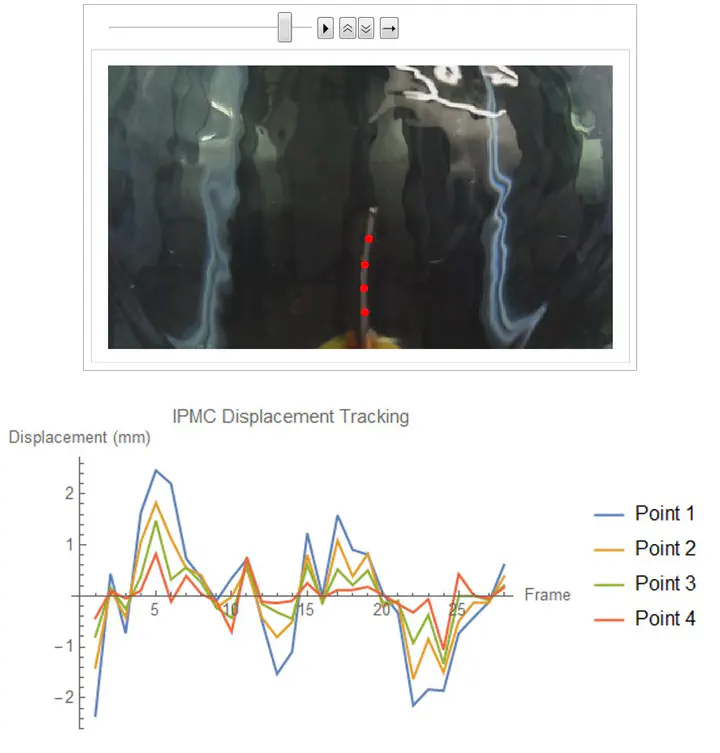Computer Vision-based Fluid-Structure Interaction Tracking using an Electroactive Polymer (EAP) Sensor
 Image credit: Unsplash
Image credit: UnsplashAbstract
Ionic polymer-metal composites (IPMCs) are a type of electroactive polymer (EAP). The unique two-way transduction property of IPMCs allow for both actuation and sensing, which, along with its ability to be used in aqueous environments, can be used for various underwater applications. Additionally, these devices are silent in operation, low in power consumption, and are flexible in scaling and shape design. As a feedback instrument for dynamics and control, these devices are desirable for NASA’s Aeronautics Research Mission Directorate (ARMD), specifically Strategic Thrusts 3 and 5 regarding ultra-efficient commercial vehicles and real-time system-wide safety assurance, respectively. In this study, imaging and image processing techniques were used in the development of a computer vision-based code within Wolfram Mathematica for tracking sensor deflection and travel velocity of an IPMC sensor. Presently, experimental validation of IPMCs as a real-time flow sensor is limited due to lack of current fluid-structure flow visualization studies. The lack of visualization disallows a means for validation and calibration of current research. By developing and implementing computer vision, the accuracy of IPMC flow sensor measurements can be improved and verified. The work presented demonstrates an initial step in using computer vision to study fluid-structure interaction and IPMC sensing. By developing a displacement and velocity tracker, future analysis can be performed on additional fluid and structural occurrences such as local vortex shedding and structural stress. \n The scientific impact of this research effort is directly related to the increasing surge of smart materials within the scientific community. Expressly for future space technologies, the inclusion of soft electroactive materials can provide safe, lightweight, and energy-efficient systems to upcoming spacecraft designs and missions regarding extraplanetary exploration, in accordance to NASA’s strategic goals. Continuous efforts in understanding and applying of smart material-based technology are a significant step in the advancement of human knowledge.